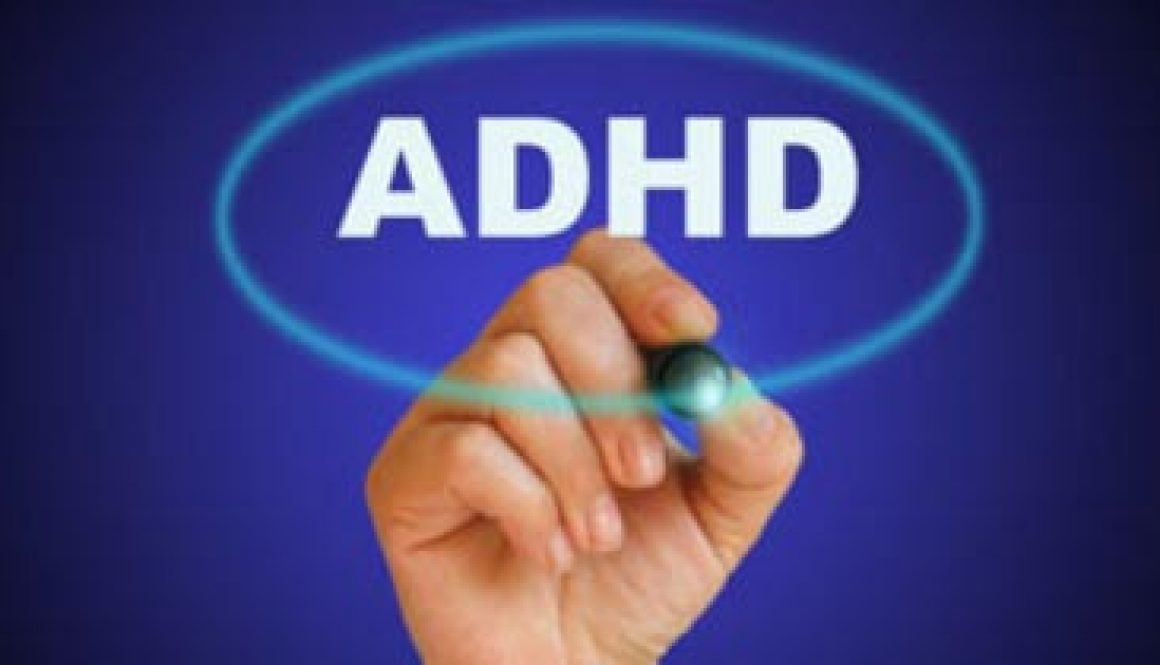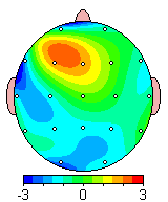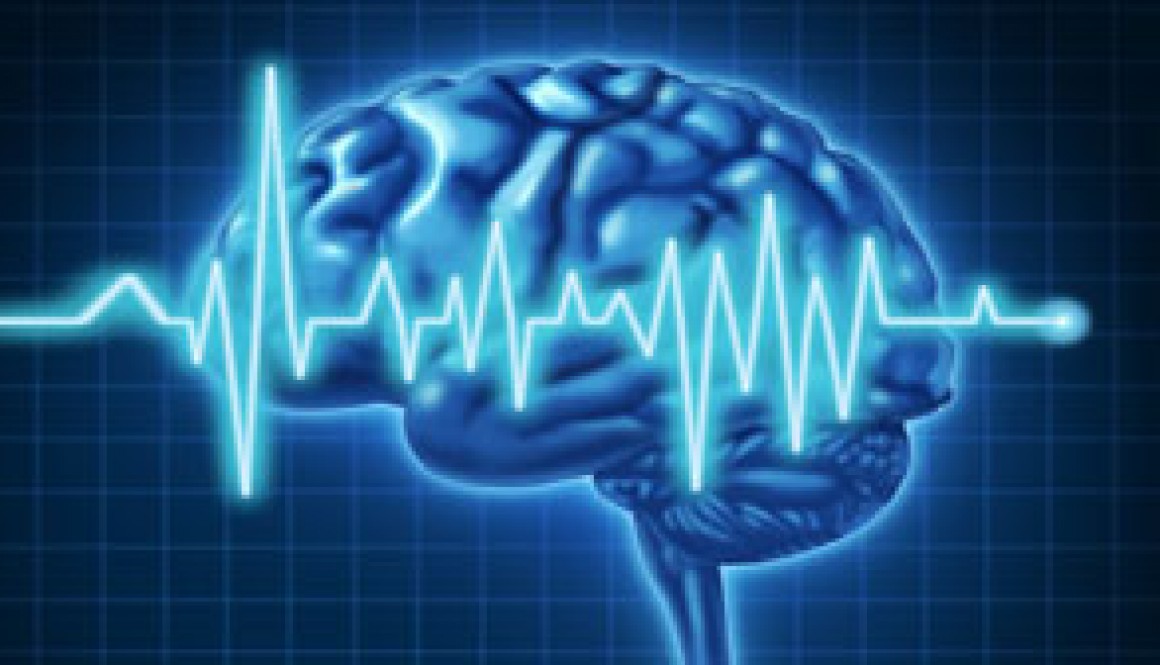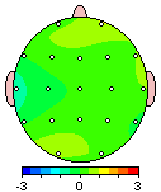neurofeedback

Former Denver Broncos Seek Concussion Relief Through Neurofeedback

About a dozen former Denver Broncos, some from the Orange Crush era, are taking part in a research study they say is helping them recover from post-concussion symptoms and traumatic brain injuries. They believe those injuries were suffered during their playing days.
The process uses Neurofeedback to “Re-train” the brain and restore healthy brainwave patterns that were knocked out of balance by years of hard hits in football games.
After going through the protocol, “It was kind of like night and day,” said former Denver Broncos offensive lineman Dave Studdard, “The light came back on, clarity just everywhere.”
He said concussion protocol in his playing days consisted of “Take a play off then come back in.” A few years ago, Studdard said he noticed he “couldn’t get anything clear in my mind… a constant fog. I felt like I was in a big fog and didn’t know how to get out.”
Watch the video above for the full story.
Neurofeedback has quickly become the newest tool in the war against long term concussion injuries. Just ask 12 former Denver Broncos who are taking part in a research study they say is helping them recover from post-concussion symptoms and traumatic brain injuries. They believe those injuries were suffered during their playing days.
But why neurofeedback? The reason is because neurofeedback is uniquely suited to address the root cause of the effects from concussions and brain injuries: Brainwaves. During a football impact between 2 players, the head is bumped violently. While the brain itself is designed to withstand the occasional blunt force trauma, your brainwaves are not so lucky. Brainwaves are responsible for most every aspect of your life, from sleep regulation to routine actions and critical thinking. A head trauma of any kind can knock these brainwaves out of rhythm, which can cause a domino effect of neurological conditions to manifest days or even years later.
There are 4 main brainwave types in your head: Delta, Theta, Alpha and Beta. Each serve different functions in the brain. Delta brainwaves are strongest when we are sleeping and help us rest and recharge. Beta brainwaves are strongest when we are awake, alert and processing information. You are using Beta brainwaves to read this article and process the information.
Decades of research have shown that a brain injury can impact Delta brainwaves by speeding them up. If Delta brainwaves are moving too fast, it will disrupt sleeping patterns, which can lead to many symptoms associated with a lack of the proper sleep your body needs to recharge and recover. In addition to this, a brain injury can slow down your Beta brainwaves. This can lead to a lack of focus and attention, brain fog, or even slower processing of information. If you can imagine a person who has trouble sleeping, has focus problems and processes information slower, you can imagine the negative impact that will have on their personality and well-being.
Fortunately for concussion sufferers, there is neurofeedback, a non-invasive process that restores normal brain function. Neurofeedback does one thing: It corrects brainwaves. If your Beta brainwaves are running too slow, neurofeedback can speed them up. Similarly, it can slow down Delta brainwaves. With brainwaves moving at the proper speed, the brain and body can heal itself and function better, thereby reducing or eliminating brain injury symptoms.
If you think you have the symptoms of a brain injury, then find out for sure. The first step is to call our office and schedule your brain map. The process is non-invasive and only takes 20 minutes. Plus we will give you a comprehensive report of findings that you can easily read and understand. If we determine that you have a brain injury, we will recommend a plan to reduce or eliminate your symptoms using neurofeedback.
Source: CBS Denver
http://denver.cbslocal.com/2016/02/08/former-broncos-seek-concussion-relief-through-neurofeedback/

Anxiety: Why Neurofeedback Works So Well

- Do you have panic attacks for seemingly no reason?
- Are you so worried about being judged by others or embarrassed that it stops you from engaging in social situations?
- Are you so scared of heights, flying, or something else that it causes you to avoid things in your daily life?
- Does stress cause you to not be able to function normally?
If worry, fear and apprehension are normal human emotions. Anxiety can be described as an extreme version of them. While these emotions come and go in most people, anxiety sufferers live with them constantly, often limiting their ability to perform simple daily tasks.
Imagine being robbed at gunpoint. The rush of adrenaline and fear can be paralyzing, affecting one’s ability to make rational or smart decisions. This is the same feeling that many experience in the midst of an anxiety or panic attack.
What Causes Anxiety?
Despite what people think, anxiety and panic attacks are not caused by fear and insecurities. Decades of research on the human brain have determined that a poorly regulated brain can results in a release of chemicals in the body that trigger anxiety symptoms. And a poorly regulated brain is the results of irregular brainwaves.
Why Do Brainwaves Matter?
Beta brainwaves are strongest when we are alert and making conscious decisions. But if these waves are too fast, it can increase levels of stress and uneasiness. Think of a car engine revving much faster than it needs to. The increased energy output is wasted and can tax the engine (the brain), leading to stress.
Theta brainwaves are strongest when we are daydreaming or in a state of extreme relaxation. During this time we produce GABA, an amino acid responsible for calming nervous activity. This is part of what allows us to recover after a stressful day. But when theta brainwaves are running too slow, we are not able to calm our minds and recover.
How Can Neurofeedback Help Anxiety?
Neurofeedback is a safe and non-invasive process that does one thing: it guides irregular brainwaves back into normal ranges using a computer. All the patient does is watch a movie or listen to music for 30 minutes at a time, the computer does the rest. It really is that simple!
Neurofeedback does not target specific brain disorders, but instead teaches your brain how to self-regulate and make healthy brainwave patterns. And when the brain is making healthy patterns, the symptoms of many neurological problems like anxiety dissipate. This process is completely safe, uses no drugs, is non-invasive and does not require any radiation.
There are 6 decades of research behind the science of neurofeedback, with countless research papers that have validated its effectiveness. Neurofeedback helps balance brain waves, and eliminates or diminishes problem behaviors without the use of medication. Unlike medications, neurofeedback has no physical side effects, and the benefits of neurofeedback have been scientifically proven to be long lasting.
Find Out More!
To find out more about this revolutionary, non-invasive process and how it can help you with your anxiety issues, please call our offices to schedule an appointment today.

Overcoming ADHD Without Medications: Why Neurofeedback Works

The truth is that ADD/ADHD is not a psychological or disciplinary problem – it’s a brain problem. Medications are often ineffective because they target metabolic symptoms (body based), not neurological ones (brain based). While minor relief is possible, the root cause is unaffected. And the side effects can often outweigh the benefits.
It’s All About Brainwaves
A person with ADHD symptoms tend to have slow beta brain waves. Beta brainwaves are associated with waking states or normal, alert consciousness. You are using Beta brainwaves by reading this article and processing the information. Additionally, an ADHD brain will tend to have higher amounts of alpha and theta brainwave activity (ref1). Alpha waves are associated with the subconscious, while Theta waves are associated with daydreaming. If the brainwaves responsible for alertness and focus are running slow while those for daydreaming are running fast, that person will display the common symptoms of ADD/ADHD.
Detecting and eliminating ADD/ADHD symptoms.
The first step in getting help is to get a QEEG Brain map. A brain map takes a snapshot of your brainwave activity, then uploads the information to a database where it is evaluated and compared to normal brainwave activity. A report is then generated that identifies the areas of your brain that are not operating at normal frequencies. It will also identify the most likely conditions associated with your brainwave activity. The report is easy to read.
The next step is to correct the brainwave frequencies, which can improve or eliminate the symptoms of common neurological issues. This is done using neurofeedback, a process that has been around since the 1960’s and is backed by decades of research. Neurofeedback specifically targets irregular brainwaves and gently guides them back into normal ranges. All you do is watch a movie or listen to music while our system monitors your brainwaves and makes minor adjustments. The process is non-invasive, takes 30 minutes and requires no extra work on your part. It’s really that easy. Over time and with multiple sessions, the brain will eventually learn to stay in the normal ranges on its own and independent of our system. Results are often permanent.
Why is neurofeedback so effective for ADD/ADHD?
If a stimulant literally speeds someone up, why is it prescribed for someone with hyperactivity problems? Why do stimulants seem to help someone with ADD/ADHD slow down and focus?
In a person with ADD or ADHD, the areas of the brain that control attention and focus may have too much slow activity, which can also lead to feeling depressed, worried, and unmotivated. Subconsciously, people with ADD/ADHD increase body movements to stimulate and “wake” their brains. This can lead to ADHD like behavior.
ADD and ADHD are brain problems. Neurofeedback allows people to work directly on the problem by training the brain to become more calm, more focused, and less impulsive. By reducing the too-fast or too-slow brain patterns that occur in the brain of someone with ADD or ADHD, neurofeedback helps the person learn how to take control.
According to health professionals who use neurofeedback in their practices, over 85% of clients with ADD or ADHD learn to increase focus, reduce impulsivity, and manage their behavior when they train with neurofeedback on a consistent basis.
The ADHD treatment guidelines developed by the American Academy of Child and Adolescent Psychiatry takes a balanced approach by rating ADHD treatments based on the preponderance of the evidence as to whether “the benefits of the recommended approach clearly exceed the harms of that approach”.
Using this professional academy’s evaluative standard, neurofeedback for the treatment of children and adolescents with ADHD clearly warrants the highest level of recommendation.
Additionally, in October 2012, the company that maintains the American Academy of Pediatrics’ ranking of research support for psychosocial treatments awarded NFB the highest level of evidence-based support for the treatment of ADHD (ref 3).
One reason that neurofeedback is so effective for ADHD and ADD is that it appeals to children and adults alike – it seems just like watching a movie! By subconsciously producing the desired brainwaves they control the playing of the movie with his or her brain. Children and adults seem to enjoy brain training, making it easy to continue with treatment and achieve significant improvements.
Sources for this material:
Ref 1: The Evidence-Base for Neurofeedback as a Reimbursable Healthcare Service to Treat Attention Deficit/Hyperactivity Disorder H. Edmund Pigott, Ph.D.,a Lindsay De Biase, Ph.D.,b
Eugenia Bodenhamer-Davis, Ph.D.c & Richard E. Davis, M.S.d
Ref 2: Zoefel, B., Huster, R.J. & Herrmann, C.S. (2011). Neurofeedback training of the upper alpha frequency band in EEG improves cognitive performance. NeuroImage, 54, 1427‐1431.
Ref 3: Lofthouse N, Arnold LE, Hersch S, Hurt E. (2012) Current status of neurofeedback for Attention-Deficit/Hyperactivity Disorder. Current Psychiatry Report, DOI 10.1007/s11920-012-0301-z.


Neurofeedback To Improve Athletic Performance

Neurofeedback (EEG biofeedback) holds potential for retraining brainwave activity to enhance optimal performance in athletes in various sports. Neurofeedback has been shown to have potential for quieting the mind to improve performance in archery, for example. It can also be used to improve concentration and focus, to improve cognitive function and emotional control following concussions and mild head injuries, and it has untapped potential to increase physical balance in gymnastics, ice skating, skiing, and other areas of performance. Clinical examples are provided on the use of neurofeedback to improve physical balance and controlled research is called for.

Neurofeedback Help For Depression

The left frontal area of the brain is associated with positive emotions and approach motivation, which is a desire to be involved with other people. The right frontal area of the brain is more associated with depression and fear, accompanied by motivation to withdraw from and avoid other people. When there is more slow brainwave activity in the left frontal area, this part of the brain is more inactive and the right frontal area is more dominant. Such a person is predisposed to become depressed more easily, to withdraw from other people, and to be anxious. This may occur because of heredity (family history) or because someone has had a concussion or mild head injury in the left frontal area which produced the slowing.
Part of a brain map from two different people is reproduced below. The map on the left is from a person with a long history of depression. You can clearly see in the left frontal area (which is colored orange and yellow) that there is an excess of slow, alpha brainwave activity. This is the pattern that has been classically associated with a vulnerability to depression. In contrast, the brain map on the right displays how a relatively normal map would look, without any excess or serious deficit.

It is interesting that research has found that antidepressants do not correct the type of brainwave pattern that we see above on the left. Thus, medication treatment for depression appears to still leave intact the biological predisposition for becoming more easily depressed when unpleasant life circumstances come along. There is also new evidence that has found that on average, antidepressant medications only have an 18% effect over and above placebo effects (Antonuccio, Danton, DeNelsky, Greenberg, & Gordon, 1999; Kirsch, Scoboria, & Moore, 2002; Kirsch & Sapirstein, 1998), and medication may only be mildly effective in treating anxiety as well (Antonuccio et al., 1999). In contrast, we know that psychotherapy for depression compares favorably with medication in short-term follow-ups (DeRubeis, Gelfand, Tang, & Simons, 1999) and appears to be superior in long-term follow-ups (Antonuccio, Danton, & DeNelsky, 1995; Hollon, Shelton, & Loosen, 1991).
Neurofeedback treatments for depression (Baehr, Rosenfeld, & Baehr 1997, 2001; Hammond, 2000, 2004) appear very promising not only in bringing relief from depression, but in modifying the underlying biological predisposition for becoming depressed. Neurofeedback focuses on retraining the brain, for example, reversing the frontal brainwave asymmetry, with the goal of producing an enduring change that does not require people to remain on medication indefinitely. Training often requires about 20 to 22 sessions.
Written by D. Corydon Hammond, PhD Professor & Psychologist, Physical Medicine & Rehabilitation University of Utah School of Medicine.
This article was taken from the website of The International Society For Neurofeedback & Research. For a full list of references on this article, you can visit the original article here.

Neurofeedback Helps Cellist Improve

An article in the journal Biofeedback presents the narrative of a young cellist who was able to realize the potential of his talent and eliminate debilitating migraine headaches. This case study is part of a special section in the Spring 2012 issue focusing on optimal functioning.
Enhancing people’s performance in business, performing and visual arts, academia, and sports can be realized through biofeedback and neurofeedback training. Tools of stress reduction, mental imagery training, psychology, and psycho-physiological technology are combined to help people reach their goals.
The author and practitioner in this case study has combined her work and study in the fields of theater, social work, and neurofeedback. In her practice, she coaches clients to achieve outstanding performances. For example, a singer can better understand and interpret a musical selection, allowing that singer to better convey the emotion of the music, resulting in a noticeably improved performance.
William, the young musician, sought relief from migraine headaches that were affecting him almost daily. His therapy, however, did not take the approach of treating the headaches, but of focusing on William as a person and as a performer. By improving his functionality, working through moments of obsessiveness, self-criticism, fear, and anxiety, the headaches could also be resolved.
William’s therapist conducted neurofeedback — using sensors to read his brainwaves, analyzing these with NeuroOptimal™ software, and then giving feedback to the brain through a visual display and sound. With this information, the brain can learn to self-correct. This technology assists in getting people past that moment when they obsess over whether they have given the correct answer or hit the right note.
NeuroOptimal feedback, guided imagery, and coaching about decisions regarding his music helped William move beyond the difficulties he encountered. During his senior recital at his college, he was able to give a relaxed, confident performance that was met with a standing ovation.
Full text of the article, “William’s Story: A Case Study in Optimal Performance,”
Biofeedback, Volume 40, Issue 1, Spring 2012


Video: Improving Your Brain Function
Neurofeedback training allows the central nervous system to function better.


